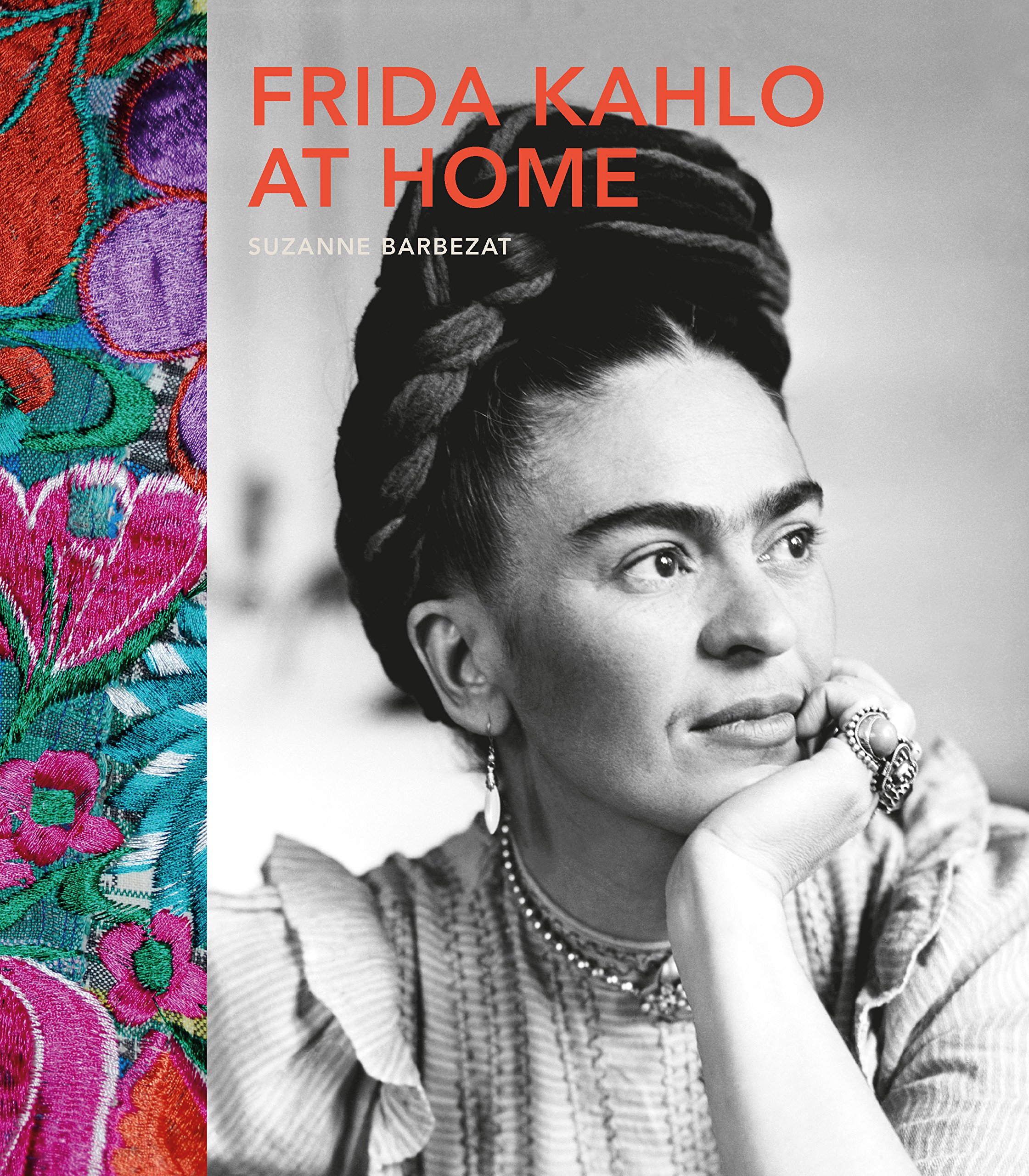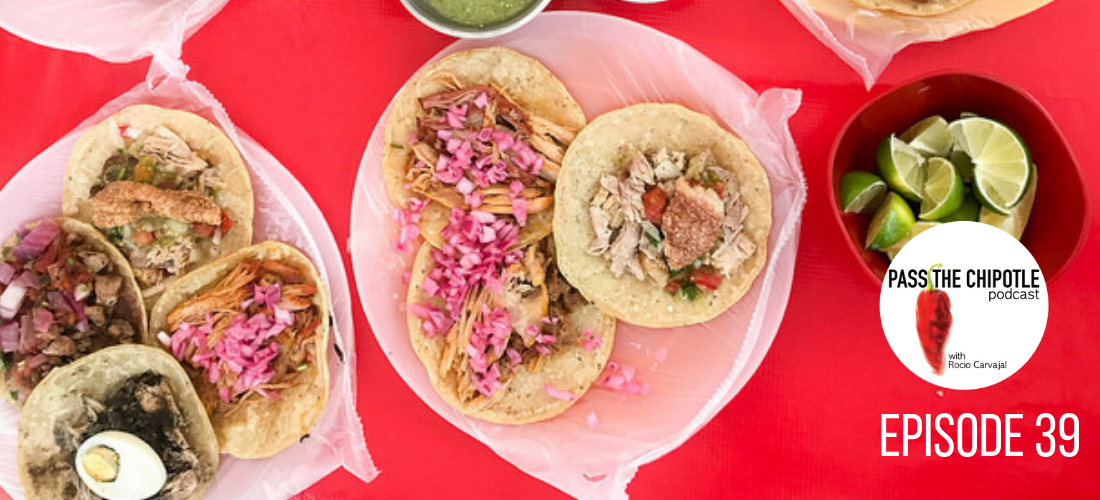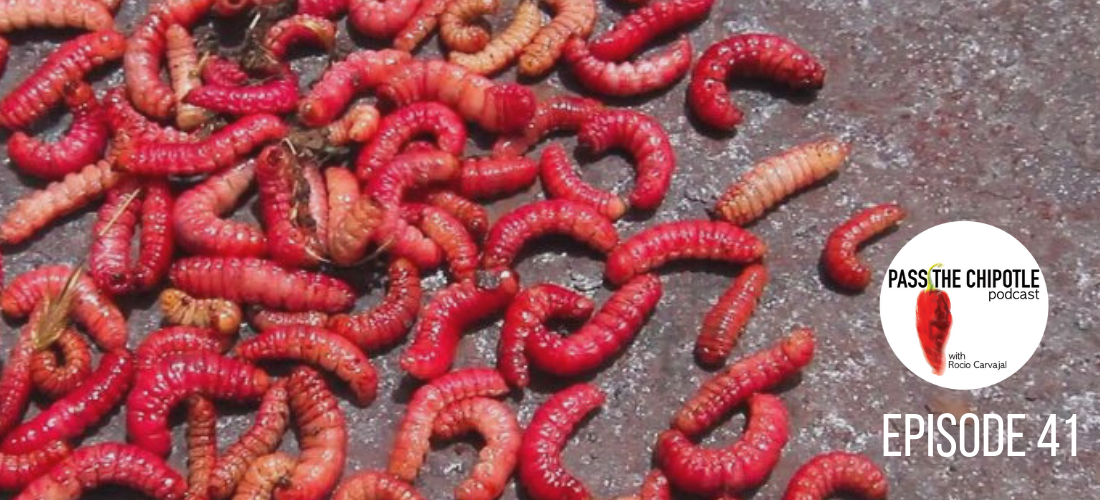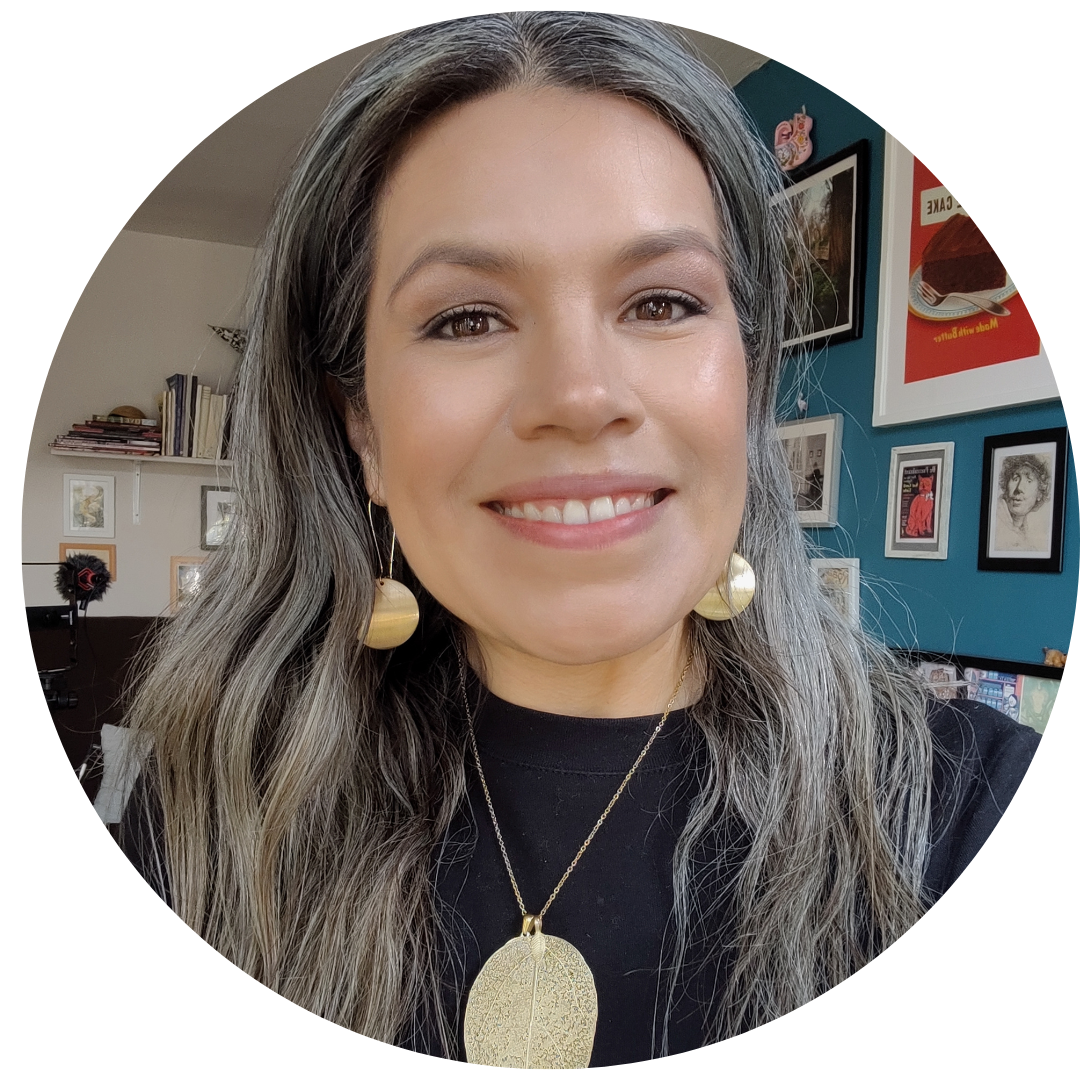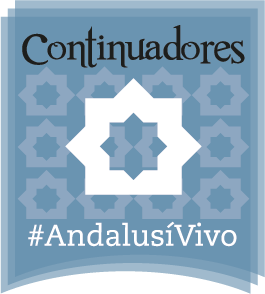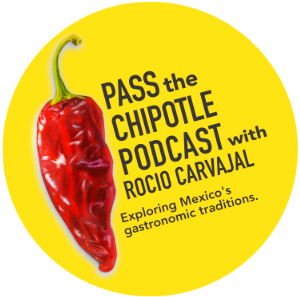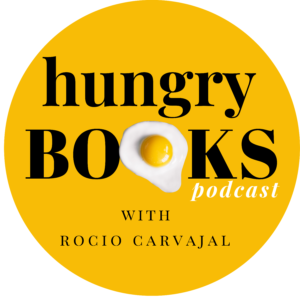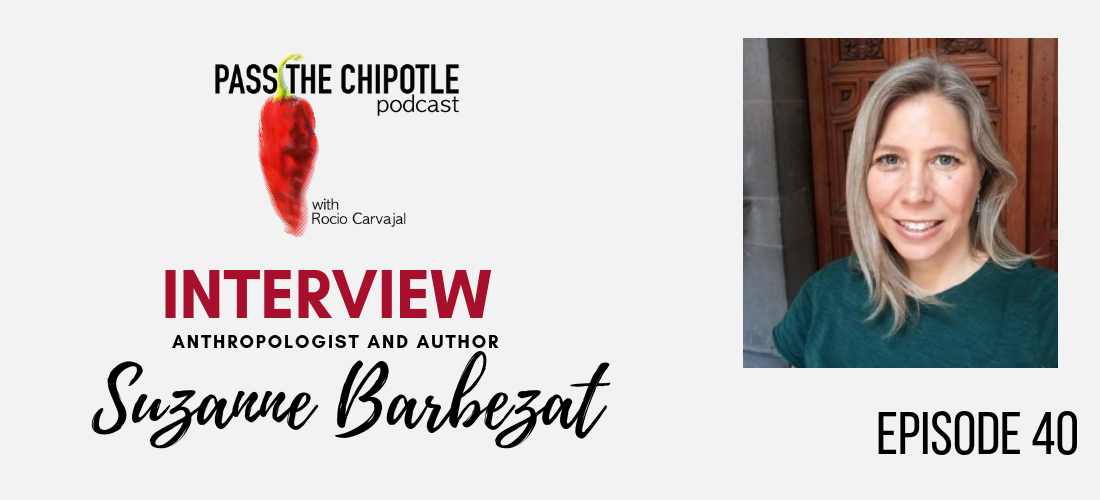
Interview with Suzanne Barbezat author of Frida Kahlo at home Ep.40
Interview with Suzanne Barbezat author of Frida Kahlo at home
Presented by: Rocio Carvajal Food history writer, cook and author.
Episode 40
Anthropologist and author of the best seller book Frida Kahlo at home Suzanne Barbezat talks about the intimate life of one of Mexico’s most celebrated artists and incredibly multidimensional woman that was Frida Kahlo, we discuss her work, little known aspects of her family life and take a virtual tour at the iconic “Blue house” in Coyoacán, Mexico.
Follow and connect with Suzanne
Web: http://www.suzannebarbezat.com/
Instagram: https://www.instagram.com/mexicoguide/
Twitter: https://twitter.com/mexicoguide/
Company: http://discover-oaxaca.com/
Facebook: https://www.facebook.com/mexico.travel
Linkedin:https://www.linkedin.com/in/suzannebarbezat
Email: sbarbezat@gmail.com
—————————————–
Newsletter: Subscribe here
Twitter: @chipotlepodcast + @rocio_carvajalc
Instagram: @rocio.carvajalc
email: hello@passthechipotle.com
web: passthechipotle.com
Youtube: Pass the Chipotle Podcast
FRIDA KAHLO AT HOME
By Suzanne Barbezat
Frances Lincoln, 2016
Get a copy of this amazing book!
Who was Frida Kahlo?
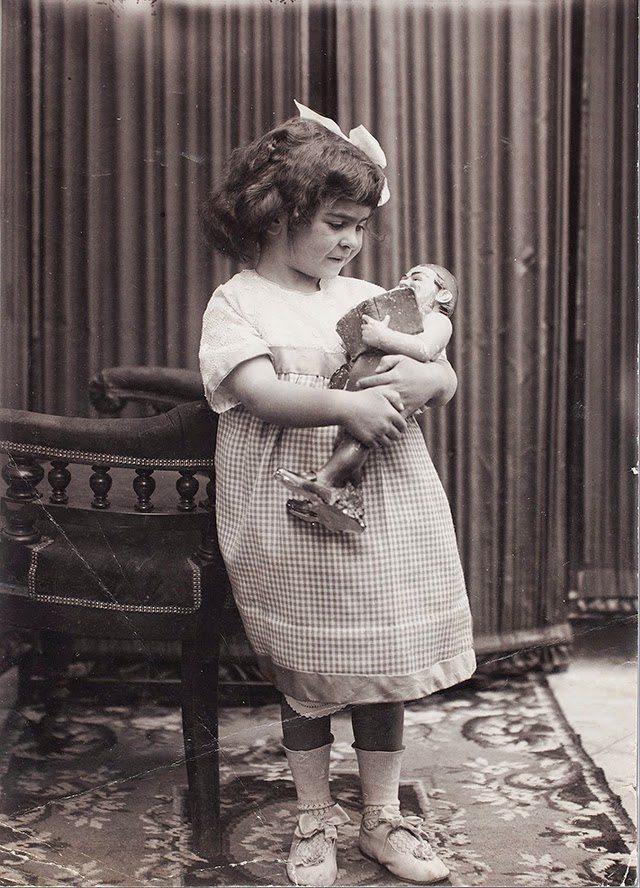
Magdalena Carmen Frida Kahlo y Calderon was born on July 6, 1907, in Coyoacan, one of the most iconic ancient barrios of Mexico City, she was the third of the four daughters of the German photographer Carl Wilhelm Kahlo and Matilde Calderon y Gonzalez.
Wilhelm Kahlo, who adopted the Spanish Guillermo was commissioned by President Porfirio Diaz to create one of the most important photographic memory of the turn of the century capturing the monumental construction iconic buildings such as the Palace of fine arts and the Postal palace. But he also documented the colonial architectural legacy of many Mexican cities, today, 4,290 of Guillermo Kahlo’s images are kept in the National photographic archive.
But in 1910, when Frida was 3 years old the Mexican Revolution who aimed to depose the 30-year presidency of Diaz, a revolution that was forcefully brought to an end in 1921with a less than satisfactory outcome for the many participant groups.
By the age of six, Frida contracted poliomyelitis affecting the development of her right leg and requiring her to use special shoes to balance.
Frida grew up in a critical moment in which art in all its expressions from music, sculpture, literature, photography and painting were used by artists often supported by liberal cultural policies to convey ideological messages that tried to reconcile a new identity and sense of nationhood in Mexico.
The institutionalised classism and racist attitudes towards values associated with indigenous and mixed heritage were now championed as the new foundational myths of what in later years was the so-called “bronze race” alluding to the mestizo population of Mexico.

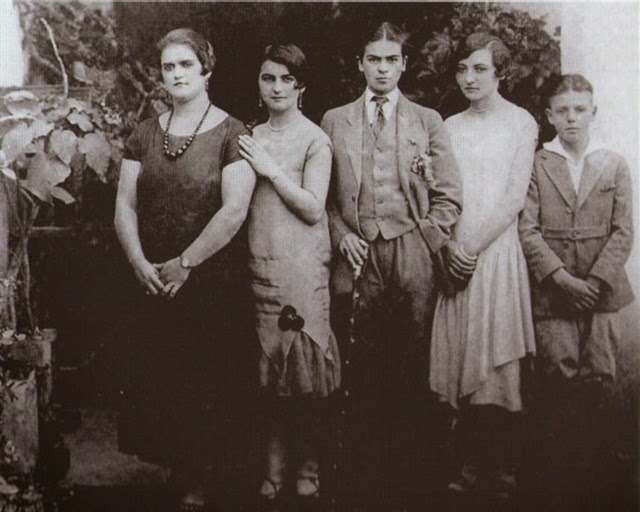
In 1925 while communing from school, the tram she was travelling in was involved in a fatal accident in which she was impaled through her pelvis by a pole breaking several ribs, legs, collarbone, affected several vertebrae and left her unable to bear children. The accident caused her to suffer permanent damage to her body and live with chronicle pain for the rest of her life.
In spite of this, she was determined to pursue a career as an engraver and painter, thanks to the care and sport of her father she continued to practice and perfect her techniques. After Frida’s initial confined recovery was over, she was very interested in the rising social movements who championed rights for the proletariat and at the age of 20 joined the Mexican Communist Party.
Frida had a very active social life in the political and artistic circles she belonged to, which put her in direct contact with many artists, intellectuals and aspiring revolutionaries. Diego Rivera was also part of these groups and it was a matter of time until they met.
During their troubled and passionate relationship and even many decades after Frida’s death, she was largely known as Diego’ wife, we might read this today as sexist, yes, but it was also largely due to the fact that he was 22 years older than her and had a long, successful and very public career.
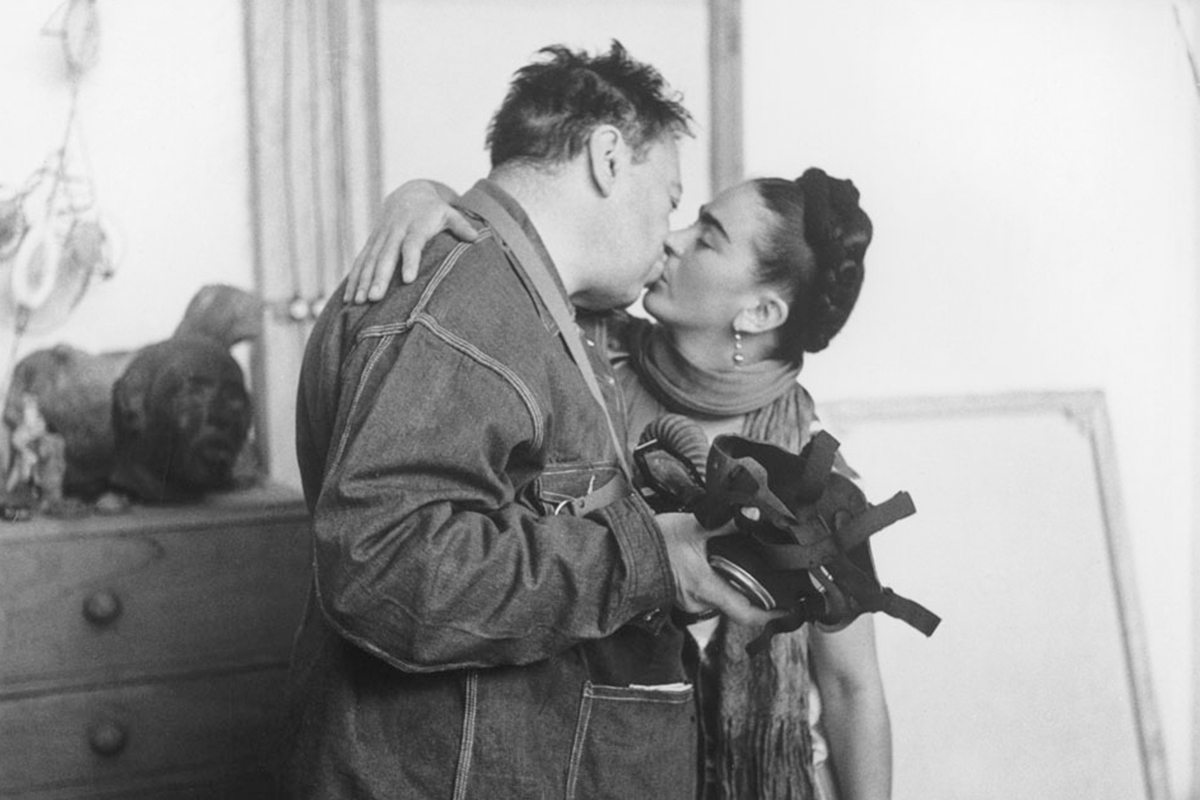
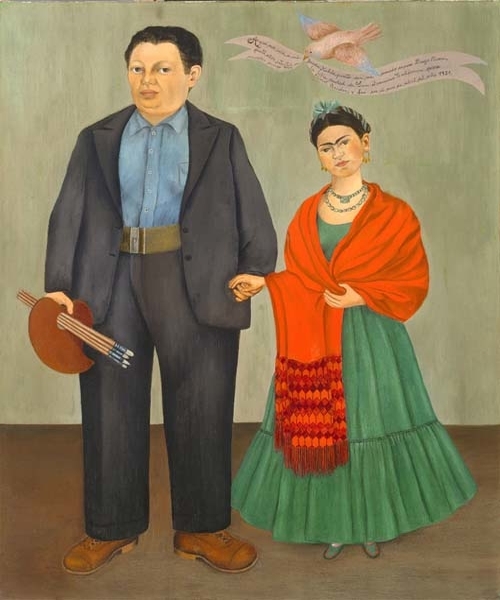

Frida and Diego were one of the most influential power-couples of their time, find out more about Frida’s biggest half:
Diego María de la Concepción Juan Nepomuceno Estanislao de la Rivera y Barrientos Acosta y Rodríguez, better known as Diego Rivera. Diego was born on December 8, 1886, he survived his twin Carlos, his parents Pilar and Diego Rivera, were a conventional couple form the quiet provincial city of Guanajuato, Mexico.
After relocating in Mexico City, Diego was enrolled at the prestigious Academy of San Carlos, the oldest art academy of the Americas. His natural talent was quickly identified by his professors who encouraged him to go to Europe and pursue further training in Spain, France where he developed an interest for post-impressionism and even cubism.
At his return to Mexico, the art scene was undergoing one of the most transcendent changes due to the groundbreaking cultural policies of the minister of education Jose Vasconcelos, a Oaxacan philosopher and politician known for his bold approach to democratise access to cultural services to all Mexicans and coining the concept of the so-called “cosmic race” referring to the mestizo and indigenous people as the backbone of the nation’s cultural wealth.
Those ideas, plus fervent socialism and a deep sense of justice towards rights of the proletariat were translated by Diego and other great muralists into powerful murals that were commissioned to decorate public buildings, universities, libraries and schools.
Diego constantly used powerful imagery inspired in the cultural clash of the colonial period, and alluding to the new indigenous mysticism to inspire a new look and appropriation of the indigenous heritage.
He was a controversial artist, strong-minded, idealistic, temperamental, incredibly talented, volatile. But at the prime of his career, he was indeed seen as a larger than life artist.
He fathered 4 children in and out of wedlock and by 1929, the year he married Frida, Diego had already had two wives, at least one known mistress, and had fathered 4 chilled of which only 3 survived.
He was 42 and Frida was 22 when they married on August 21, 1929. The marriage caused a major rupture in the relationship of Frida and her very conservative mother Matilde who never approved of her daughter’s life choices.
In the youtube Chanel of Pass the Chipotle, you can revisit episode 6 in which I talk about Frida and Diego’s wedding reception and the delicious menu they offered.

The couple had a complex and at moments distractive relationship, the age difference, volatile temper of both, Diego’s constant affairs, Frida’s own string of revenge affairs and her traumatic string of miscarriages was a constant source of fights that caused the couple to split and get back together on many occasions.
While the couple had a shared home, which was Frida’s family house known as the “Casa Azul” or lies house in the historical area of Coyoacan as I mentioned before, they had other properties in San Angel and Diego owned a private studio called “Anahuacalli”.
Frida became an artist in her own right, and her work is defined by her personal narrative, a catalyst for her permanent health and emotional problems. She never defied herself as an icon, she instead considered her work as iconoclast which is why today’s global obsession with the oversimplified imagery of Frida’s hairdresser and clothing is one of the ultimate ironies for an artist, activist and intellectual who despised mainstream culture and saw mass-consumption as the death of individual expression.
Frida died at the age of 47 in her beloved family home on July 13, 1954, the causes are still debated as some evidence suggest she committed suicide, but her poor health could have also been the cause. †
The Guardian published article by Jenny Valentish called: The commodification of Frida Kahlo: are we losing the artist under the kitsch? Which you can read HERE, and I found it incredibly pertinent because it eases so many questions about the incapable appetite of social media ready imagery, mass produced memorabilia that’s essential to music festival paraphernalia, ie. flower bands unibrow makeup, and more importantly the trivialisation of art, ideology, and tridimensional life into keyrings.
While I remember the days when Frida was seen in Mexico as a powerful and slightly obscure character, due more to the lack of understanding of her to the ubiquitous halloween costumes that honest they make me cringe.
Perhaps one of Frida’s most hard-line attitudes were those about her open antipathy for capitalism and mass consumption, she conducted herself as text book iconoclast not fashion icon but was pretty much aware of the way she chose to design her public persona which was incidentally the person she also wanted to be in private. The cultural confusion that appropriation creates is that it commodifies life into affordable mass-produced memorabilia and in the case of Frida who is so strongly associated to Mexico, folklore and Mexican femininity it makes very easy to cross over to the extreme opposite of what Frida once stood for.
Now it is not my intention to sound radical or judgmental, I wholeheartedly celebrate the acknowledgment of the immense talent and legacy of Frida and that I myself recognise her influence in my understanding of the way in which Mexico’s identity continues to evolve.
What are your thoughts about that?

